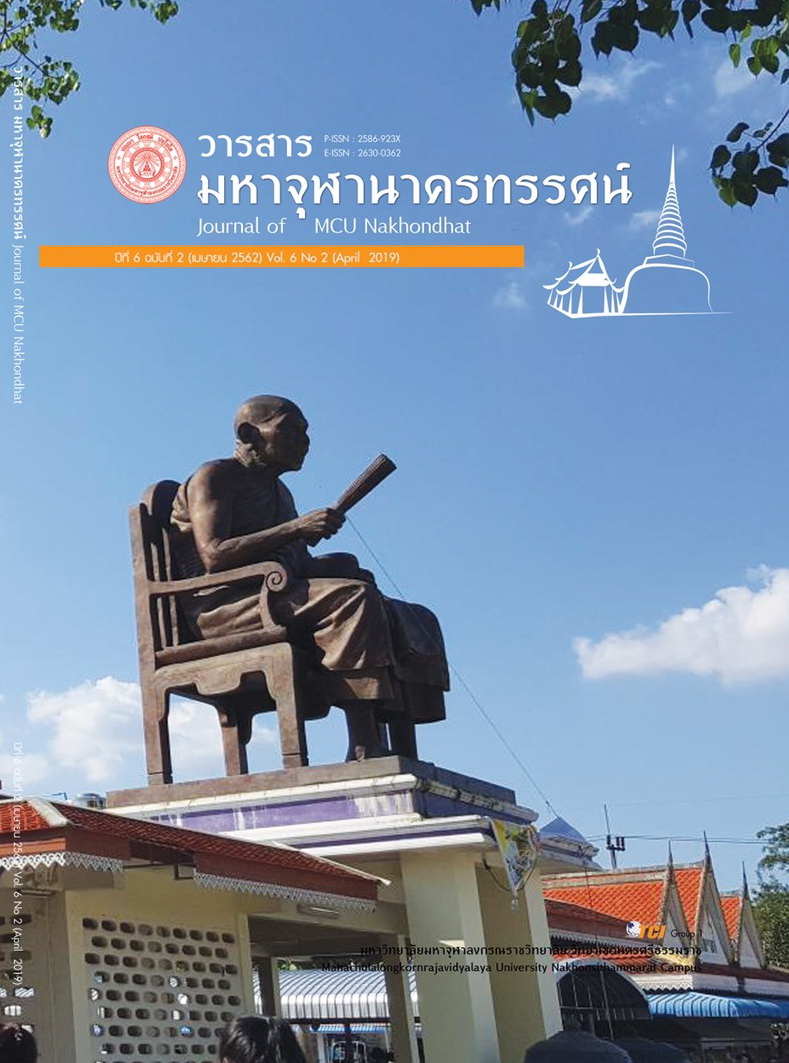EMPOWERMENT MODEL FOR FAMILIES, COMMUNITIES AND NETWORKS FOR ELDERLY WELLBEING IN AREAS AFFECTED BY RECURRING DISASTERS.
Main Article Content
Abstract
This research and development study aimed to: 1) examine a current empowerment model for families, communities and networks for elderly wellbeing in areas affected by recurring disasters; 2) to develop an empowerment model for families, communities and networks for elderly wellbeing in areas affected by recurring disasters; and 3) to implement and evaluate the empowerment model for families, communities and networks for elderly wellbeing in areas affected by recurring disasters. The research employed qualitative research method. Research population was elderly people, families, caregivers, volunteers, community leaders, and related healthcare providers. Purposive sampling was used in this study.
The findings showed that;
An empowerment model for families and communities would be effective when family members possessed skills in urinary catheterization, enteral feeding, and a mechanical ventilator operation. It was also found that this group of senior citizens needed intensive care during climatic change in their surroundings. Additionally, the result pointed out that stress and anxiety were frequently found among family members and community. This means that an empowerment was crucial. As a result, teams from a sub-district health promoting hospital working cooperatively with related external agents have conducted lessons to enhance elderly care such as caregiver training and machine operator training lessons. The process of the empowerment model development was divided into 3 steps which were a brainstorming session to come up with a plan to support and facilitate families and community, an analysis and critique session by experienced experts, and a synthesising session which resulted in an empowerment model (Park Nakon Model). An implementation and evaluation of the empowerment model was carried out in Meung district, Nakhon Si Thammarat province, focusing on recurring disasters affected areas which were Watmookthara sub-district health promoting hospital, Bann Kokekoi sub-district health promoting hospital, and Bann Bangkrabue sub-district health promoting hospital.
Article Details
References
สำนักงานคณะกรรมการสุขภาพแห่งชาติ (สช.) . (2558) . คู่มือสำหรับประชาชน การดูแลผู้ป่วยระยะสุดท้ายแบบประคับประคอง (Palliative Care) พิมพ์ครั้งที่ 8 . กรุงเทพมหานคร: บริษัท พิมพ์ดี จำกัด.
สำนักงานหลักประกันสุขภาพแห่งชาติ. (2560) . คู่มือบริหารกองทุนหลักประกันสุขภาพแห่งชาติ ปีงบประมาณ 2561. กรุงเทพฯ: พิมพ์ที่ห้างหุ้นส่วนจำกัดอรุณการพิมพ์.
สำนักส่งเสริมสุขภาพ กรมอนามัย กระทรวงสาธารณสุข . (2556) . กลยุทธ์การดำเนินงานตำบลดูแลสุขภาพผู้สูงอายุระยะยาวกับตำบลต้นแบบดีเด่น พิมพ์ครั้งที่ 1. สำนักงานกิจการโรงพิมพ์องค์การสงเคราะห์ทหารผ่านศึกในพระบรมราชูปถัมภ์ .
สำนักส่งเสริมสุขภาพ กรมอนามัย กระทรวงสาธารณสุข . (2556) . คู่มือการปฏิบัติงานการสร้างเสริมและดูแลสุขภาพผู้สูงอายุสำหรับอาสาสมัคร (ฉบับปรับปรุง) พิมพ์ครั้งที่ 4 . สำนักงานกิจการโรงพิมพ์องค์การสงเคราะห์ทหารผ่านศึก.


